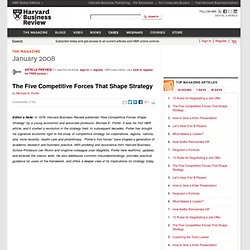

The New York Times strategy memo - Oct. 7, 2015. October 7, 2015 From our earliest days, The New York Times has committed itself to the idea that investing in the best journalism would ensure the loyalty of a large and discerning audience, which in turn would drive the revenue needed to support our ambitions.

This virtuous circle reinforced itself for over 150 years. And at a time of unprecedented disruption in our industry, this strategy has proved to be one of the few successful models for quality journalism in the smartphone era, as well. This week we have been celebrating a remarkable achievement: The New York Times has surpassed one million digital subscribers. Our newspaper took more than a century to reach that milestone. This accomplishment offers a powerful validation of the importance of The Times and the value of the work we produce. Our model — offering content and products worth paying for, despite all the free alternatives — serves us in many ways beyond just dollars.
Our Challenge These are serious and fair questions. Business Strategy. What is it?

An activity map is a diagnostic tool to identify your organisations competitive advantage. It connects your organisation’s value proposition to the activities of your organisation that enable you to deliver this value proposition better than any competitors. When is it useful? Drawing the activity map is not easy. However, once you have a good one, it is a very insightful strategic tool. Make incremental decisions about whether a new idea or opportunity fits the strategy. An Example? Southwest Airlines has a very robust strategy – one of the reasons it has been the most consistently profitable airline in the US. It’s activity map shows great fit – everything that it does is tailored to delivering its low cost, convenience, on-time, friendly but limited customer service.
The interlinkages indicate that it is very hard for competitors to copy their strategy – a competitor would have to match them on multiple different areas at the same time. How do you do the analysis? C. Like this: Strategic Position. What Is Strategy? The Five Competitive Forces That Shape Strategy. Editor’s Note: In 1979, Harvard Business Review published “How Competitive Forces Shape Strategy” by a young economist and associate professor, Michael E.

Porter. It was his first HBR article, and it started a revolution in the strategy field. In subsequent decades, Porter has brought his signature economic rigor to the study of competitive strategy for corporations, regions, nations, and, more recently, health care and philanthropy. “Porter’s five forces” have shaped a generation of academic research and business practice. With prodding and assistance from Harvard Business School Professor Jan Rivkin and longtime colleague Joan Magretta, Porter here reaffirms, updates, and extends the classic work. In essence, the job of the strategist is to understand and cope with competition.
As different from one another as industries might appear on the surface, the underlying drivers of profitability are the same. The Big Lie of Strategic Planning. All executives know that strategy is important.

But almost all also find it scary, because it forces them to confront a future they can only guess at. Worse, actually choosing a strategy entails making decisions that explicitly cut off possibilities and options. An executive may well fear that getting those decisions wrong will wreck his or her career. The natural reaction is to make the challenge less daunting by turning it into a problem that can be solved with tried and tested tools. That nearly always means spending weeks or even months preparing a comprehensive plan for how the company will invest in existing and new assets and capabilities in order to achieve a target—an increased share of the market, say, or a share in some new one.
This is a truly terrible way to make strategy. In this worldview, managers accept that good strategy is not the product of hours of careful research and modeling that lead to an inevitable and almost perfect conclusion. Closing the Chasm Between Strategy and Execution - Doug Sundheim. By Doug Sundheim | 11:00 AM August 22, 2013 Setting strategy is elegant.

It’s a clean and sophisticated process of collecting and analyzing data, generating insights, and identifying smart paths forward. Done at arm’s length in an academic fashion, tight logic is the only glue needed to hold ideas together. The output is a smooth narrative in a professional-looking document made up of Venn diagrams, 2×2 matrices, and high-level plans of attack. Do 9 out of 10 strategies really fail? I don’t think so!, in 4G Balanced Scorecard. Given the Balanced Scorecard approach is now twenty years old, it is worth looking back at the assumptions, myths, and where it has come from: Also where it is now.

In this article we look at a really common statistic that was popularised with Norton & Kaplan’s approach: you may have come across the “statistic” that 90% business strategies fail due to poor execution. Now, I have never believed it, though it is attributed to Fortune Magazine in the early 90′s. It is also frequently cited in Balanced Scorecard literature as Norton & Kaplan also refer to the article. So, in response to a question put on Linkedin about where it came from and whether it is still true, I want to explain what really lay behind this figure and what it really means.